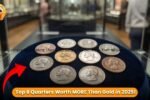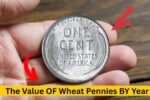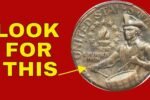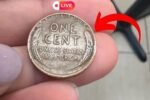Rare $2 Bill Valued: Imagine stopping by a gas station, buying a drink, and getting change that turns out to be worth millions. Sounds like something out of a movie, right? But this unbelievable story became a reality when a simple $2 bill, casually handed over as change, was discovered to be worth a jaw-dropping $2.612 million. Let’s dive into the fascinating story behind this lucky find, why this bill was so valuable, and what makes certain old money worth far more than its face value.
The Unexpected Discovery
It all started at a small-town gas station when a customer received a $2 bill as part of their change. At first, nothing seemed special about it—it was just an old, slightly worn note that most people rarely see these days. But later, when the person took a closer look, they noticed something unusual about the design and the serial number. Out of curiosity, they decided to have it checked by a currency expert. What they found was shocking: this simple bill wasn’t just old—it was a rare collectible piece from a limited print that had historical significance and printing errors that made it one of a kind.
Why the $2 Bill Is So Rare
The $2 bill has always been a bit of a mystery in American currency. Many people don’t even realize it’s still in circulation. The first $2 bills were printed in the 1860s, and over the years, they’ve been redesigned and reissued multiple times. However, because of low demand and public misunderstanding, they became less common. Most people assumed they were discontinued, which made the few that remained even more valuable to collectors.
The particular $2 bill in this story came from a rare series printed with a limited batch number. Only a handful of these bills were ever released, and some had slight misprints—tiny errors that collectors consider priceless. Combined with its excellent condition, this bill turned from a piece of pocket change into a multimillion-dollar treasure.
The Role of Serial Numbers and Misprints
One of the most fascinating things about currency collecting is how much value can be tied to a bill’s serial number. Some serial numbers—like those with repeating digits, patterns, or extremely low numbers—can fetch thousands of dollars. In this case, the $2 bill featured an incredibly rare serial pattern that made it stand out immediately to experts.
Additionally, misprints or production errors—like ink smudges, off-center designs, or double prints—can skyrocket a bill’s value. While most people see these as mistakes, collectors see them as rare opportunities to own something that’s literally one of a kind.
The Expert Confirmation
After the lucky owner brought the bill to a professional appraiser, it went through detailed verification. The experts confirmed that it belonged to a special 2003 print batch that had been pulled out of circulation early due to a printing error. However, a few escaped into public hands before being recalled. The appraiser described it as “a collector’s dream” and valued it at approximately $2.612 million during an auction estimate.
Once the news spread, collectors from all over the country became interested. The bill’s story went viral, inspiring people to start checking their wallets, piggy banks, and old drawers for forgotten $2 bills or misprinted currency that might be worth a fortune.
What Makes Old Currency Valuable
Many people wonder why some pieces of paper money are worth so much. The truth is, value depends on several key factors—rarity, condition, historical significance, and demand among collectors. Bills that were printed in small numbers, contain unique features, or are linked to specific historical events often attract higher prices.
A bill’s “grade” also plays a big role. Currency in near-perfect condition (known as “uncirculated”) tends to fetch the highest value. The $2 bill in this story was surprisingly well-preserved despite being used as change, which made it even more exceptional.
Lessons from the Gas Station Miracle
This incredible discovery is a reminder that treasures can appear in the most ordinary places. Something as simple as paying for gas can lead to life-changing luck if you keep your eyes open. It also shows the importance of curiosity—if the owner hadn’t bothered to examine the bill closely, they might have spent it without ever realizing its true worth.
So next time you get change at a store or find an old bill in your drawer, take a moment to look at it carefully. You never know—you might be holding a hidden fortune.
The Growing Interest in Collecting Currency
Since this story broke, there has been a noticeable rise in people becoming interested in old money collecting. Many are searching for $2 bills, silver certificates, or misprinted notes, hoping to find their own piece of history. Websites, auctions, and social media groups dedicated to rare currency have seen a surge in activity.
This growing fascination not only connects people with America’s financial past but also turns an ordinary hobby into a potential investment. As rare bills continue to surface, the excitement of finding one remains as thrilling as ever.
FAQs
Q: Is the $2 bill still in circulation?
Yes, it is! The U.S. Treasury still prints $2 bills, but they’re released in limited quantities, which is why you rarely see them in stores.
Q: How can I tell if my $§2 bill is valuable?
Check for unusual serial numbers, misprints, old series dates (especially from the 1800s or early 1900s), and condition. Having it appraised by a professional is the best way to know its true value.
Q: Can I sell my rare currency online?
Absolutely. Many collectors buy and sell through certified auction houses, online platforms, or currency shows. Just make sure to verify authenticity before selling.
Q: Why are misprinted bills worth more?
Because they are accidental and very limited in number, making them rare collectibles that many people want to own.




